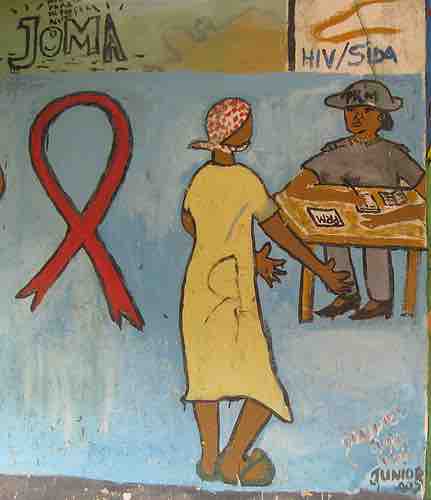HIV and AIDS in Health Care
Acquired immune deficiency syndrome or acquired immunodeficiency syndrome (AIDS) is a disease of the human immune system caused by the human immunodeficiency virus (HIV). The illness interferes with the immune system, making people with it much more likely to get infections that do not affect people with working immune systems. This susceptibility gets worse as the disease continues. HIV is transmitted through sexual intercourse, contaminated blood transfusions and hypodermic needles. It can also be transmitted between mother and baby during pregnancy, childbirth and breastfeeding. It can be transmitted by any contact of a mucous membrane or the bloodstream with a bodily fluid that has the virus in it, including blood, semen, vaginal fluid, preseminal fluid, or breast milk.
The virus and disease are often referred to together as HIV/AIDS. The disease is a major health problem in many parts of the world, and is considered a pandemic; a disease outbreak that is not only present over a large area but is actively spreading. In 2009, the World Health Organization (WHO) estimated that there are 33.4 million people worldwide with HIV/AIDS; 2.7 million new HIV infections are reported per year along with two million annual deaths due to AIDS. The three main transmission routes of HIV are sexual contact, exposure to infected body fluids or tissues, and from mother to fetus during the perinatal period. It is possible to find HIV in saliva, tears and urine of infected individuals, but there are no recorded cases of infection by these secretions. Anti-retroviral treatment of infected patients also significantly reduces their ability to transmit HIV to others. This treatment reduces the amount of virus in bodily fluids to undetectable levels
People with AIDS also have an increased risk of developing various cancers like Kaposi's sarcoma, cervical cancer and cancers of the immune system known as lymphomas. In addition, people with AIDS often have systemic symptoms of infection like fevers, sweats (particularly at night), swollen glands, chills, weakness, and weight loss. The opportunistic infections AIDS patients develop depend in part on the prevalence of these infections in the patient's geographic area. Symptoms of AIDS are primarily the result of conditions that do not normally develop in individuals with healthy immune systems. Most of these conditions are opportunistic infections caused by bacteria, viruses, fungi and parasites normally controlled by the elements of the immune system that HIV damages. These infections affect nearly every organ system.
Many people are unaware that they are infected with HIV. Less than 1% of the sexually active urban population in Africa has been tested; this proportion is even lower in rural populations. Furthermore, only 0.5% of pregnant women attending urban health facilities are counseled, tested or receive their test results. Again, this proportion is even lower in rural health facilities. Therefore, donor blood and blood products used in medicine and medical research are screened for HIV.
There is currently no publicly available HIV vaccine or cure for HIV or AIDS. The only known methods are based on avoiding exposure to the virus or, failing that, an antiretroviral treatment given directly after a highly significant exposure. This treatment is called post-exposure prophylaxis (PEP). PEP has a very demanding four-week schedule of dosage. It also has very unpleasant side effects, including diarrhea, malaise, nausea and fatigue.

AIDS awareness in Chimoio
AIDS awareness painting on a wall in Chimoio town, Mozambique.